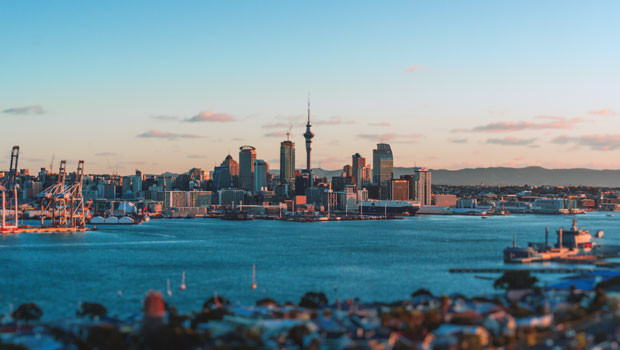
Source: Sharecast
A summit between Trump and Russian president Vladimir Putin closed over the weekend without a ceasefire agreement.
Patrick Munnelly, market strategy partner at TickMill, said: “Asian markets experienced gains as investors looked forward to President Trump's discussions with Zelenskiy, building on the recent summit with Russia that did not exacerbate geopolitical strife.
“The MSCI Asia Pacific Index rose by 0.4%, fueled by gains in China and Japan, while South Korea lagged.”
Regional equity markets mixed after Trump-Putin weekend summit
In Japan, the Nikkei 225 gained 0.77% to close at a record 43,710.50, led by sharp rises in Suzuki Motor, up 10.2%, Isetan Mitsukoshi, up 7.79%, and CyberAgent, up 7.67%.
The broader Topix index rose 0.43% to 3,120.96.
Chinese stocks extended gains, with the Shanghai Composite up 0.85% at 3,728.03 and the Shenzhen Component climbing 1.73% to 11,835.57.
Jilin Yatai Group, Inner Mongolia Jinmei Chemical Technology and Appotronics each advanced more than 10%.
Munnelly noted that “a gauge of Shanghai-listed stocks is set for its highest closing in a decade,” reflecting renewed investor appetite.
In Hong Kong, however, the Hang Seng Index fell 0.37% to 25,176.85, weighed down by declines in Tingyi, Longfor Properties and China Resources Land, all down around 3%.
South Korea’s Kospi 100 retreated 1.77% to 3,215.64, pressured by sharp losses in LF Co, down 6.85%, LS Industrial Systems, off 6.84%, and Hyundai Electric Energy Systems, down 5.64%.
In Australia, the S&P/ASX 200 rose 0.23% to 8,959.30, supported by a 6.67% rise in Lend Lease Group, a 4.45% gain for REA Group and a 3.94% increase in IDP Education.
Across the Tasman Sea, New Zealand’s S&P/NZX 50 added 0.63% to 12,970.64, led by Pacific Edge, which rose 7.02%, Eroad, up 3.9%, and Vector, up 3.66%.
Currency markets were mixed, with the dollar up 0.16% on the yen to trade at JPY 147.43, while it lost 0.08% against the Aussie to AUD 1.5356, and retreated 0.25% from the Kiwi to change hands at NZD 1.6844.
In commodities, Brent crude futures were last up 0.46% on ICE at $66.15 per barrel, while the NYMEX quote for West Texas Intermediate gained 0.61% to $63.18.
According to Munnelly, “crude oil prices varied as concerns over supply disruptions subsided.
“The dollar index held steady; US Treasuries edged up, with the 10-year yield dropping one basis point to 4.30%.
“Gold saw a 0.6% increase, whereas cryptocurrencies experienced a decline.”
Singapore exports fall, New Zealand services sector contracts
In economic news, Singapore’s non-oil domestic exports fell 4.6% in July from a year earlier, according to Enterprise Singapore, as shipments to the United States plunged 42.7%.
The steep decline was driven by a 93.5% drop in pharmaceutical exports, while specialised machinery and food preparations fell 45.8% and 48.8% respectively.
The US remained Singapore’s largest market, but new tariff measures had intensified risks.
On 6 August, US president Donald Trump announced a 100% tariff on chips from firms not investing in the US and threatened levies of up to 250% on pharmaceutical imports.
Munnelly pointed out that “in the context of tariffs, one might expect falling import prices as overseas sellers seek to maintain competitive consumer prices.
“However, this trend has yet to materialise.
“Instead, the risk emerges that US importing firms will pass tariffs onto consumers, compounding the import price increases. In the short term, this dynamic seems likely to contribute to inflationary pressures.”
Exports also fell to China and Indonesia but grew to the EU, Taiwan, South Korea and Hong Kong.
Despite the weakness, Singapore last week raised its 2025 GDP forecast to 1.5% to 2.5%, from a previous 0% to 2%, although prime minister Lawrence Wong cautioned in a National Day speech that “small and open economies like us will feel the squeeze” from rising trade barriers.
Thailand’s economy meanwhile grew 2.8% year-on-year in the second quarter, slowing from 3.2% in the first but slightly above expectations of 2.5%.
On a quarterly basis, GDP expanded 0.6% versus 0.7% in the first quarter.
Exports rose 12.2% from a year earlier, remaining the key growth driver, though analysts warned that US tariffs could weaken momentum.
Tourism was continuing to struggle with fewer Chinese visitors, while domestic demand softened, with private consumption growth easing to 2.1%.
High household debt and falling consumer lending were limiting spending, while government expenditure had contracted for a third straight quarter ahead of planned fiscal tightening.
Capital Economics forecasted full-year growth of 2.7% in 2025, only marginally above 2024’s 2.5%, and expected at least one more rate cut by the Bank of Thailand.
In New Zealand, the services sector contracted for a sixth consecutive month in July, with the BNZ-BusinessNZ performance of services index at 48.9, below the 50 threshold that separates expansion from contraction.
Activity and employment remained weak, though inventories showed growth.
Businesses reported falling sales, cost pressures, and fragile confidence amid high inflation, elevated interest rates, and subdued demand.
Munnelly added: “Globally, the Reserve Bank of New Zealand is expected to cut rates by 25 basis points to 3% this week,” underscoring the pressures facing the Kiwi economy.
However, BNZ senior economist Doug Steel noted that alongside improving manufacturing and transport indicators, the PSI pointed to “accumulating early signs of life in the economy,” even if services remain under strain.
Reporting by Josh White for Sharecast.com.